Nurturing Nature
By: Carol Suits
Liberty Wildlife Volunteer
Kids are superheroes when they help nature. Be a superhero and find lots of ideas to make your yard more wildlife-friendly!
This month the Superhero Club will be working on growing a pollinator guarden that will feed nectar to pollinators and produce seeds for new plants. It can be as little as a pot of flowers or a part of your yard or your school yard.
Can you name some of the pollinators we can help by growing a pollinator garden?
HINT: 5 of them begin with the letter B!
Find the answers at the end of Kid Stuff
- Create a pollinator garden in a pot or spot in your yard. *
- Find out and draw or list which plants are pollinator friendly. *
- Draw or list pollinators you see in your nature journal*
- Take photos of the pollinators visiting your yard (can also make a slideshow to share)
- Make a short informative video about pollinators and how they help the environment and share it with family, friends, and the Superhero Club
- Make pollinator posters to put up in school and bring one to the next Superhero Club meeting. *
*Indicates activities that earn Superhero Points. The water and shelter habitat activities suggested below were taken from the September issue of Kid Stuff/Nature News. Other activities in that issue may be substituted to earn points.
Superheroes earning points will be recognized with award certificates, featured in a future issue of Kid Stuff, and will display their work at Liberty Wildlife. Please encourage documentation and sharing with the club to earn points.
Meet one of the pollinators
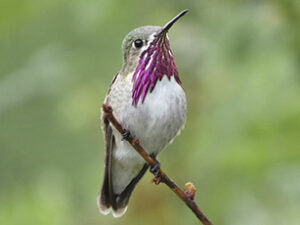
Wonder!
Hummingbirds like Wonder find food in flowers and help pollinate plants at the same time to grow new plants.
https://kidsgardening.org/resources/pollinator-pals/ Meet some cool pollinator critters here.
https://kidsgardening.org/resources/garden-activities-plant-a-butterfly-garden/
https://kidsgardening.org/resources/gardening-basics-grow-milkweed-to-help-monarch-butterflies/

This is a queen caterpillar on a milkweed plant in my pollinator garden. It grew here and ate the leaves of this plant. Now, it’s not eating which is OK. It is beginning to grow its chrysalis so it can become a queen butterfly.
Monarch butterflies need milkweed plants to lay their eggs and grow their caterpillars.
“Unfortunately, monarch butterflies are in trouble. Over the past twenty years, monarch populations have declined by over 90%. The biggest threat to the monarchs is loss of habitat.”
Superheroes can help the monarch butterfly by providing a great habitat!
Your pollinator garden area will provide food and other important habitat needs.
Habitat Need – Water *
Make a Puddle Patch for butterflies
https://www.youtube.com/watch?v=bsZYMH5xRTA
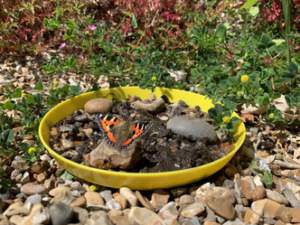
Habitat Need – Shelter *
Make a bee house for solitary bees.
https://tinyurl.com/Solitary-bees-and-houses
https://tinyurl.com/Bee-House-Supplies
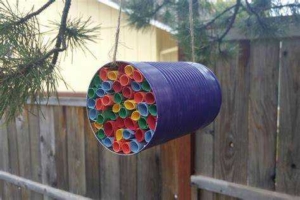

Parents: This is an older BirdSleuth edition of the Lab’s ongoing education series for kids. You’ll find good habitat information and activities.
BirdSleuth Explorer’s Guidebook_refuges.pdf * From Cornell Lab of Ornithology K-12 Education
Puzzles!
https://www.jigsawplanet.com/?rc=play&pid=022ebf4f8a45
https://www.jigsawplanet.com/?rc=play&pid=1fdbb9c1e7c8
https://www.jigsawplanet.com/?rc=play&pid=1f3b98edf73e
The 5 B’s Pollinator answers
Birds, Bees, Bugs, Bats, Butterflies! Can you think of any more pollinators?
Not a Rat and Not in Your Pocket
By Gail Cochrane
Liberty Wildlife Volunteer
In the dark of night small critters venture out from cozy burrows to roam and forage across the desert floor. Asleep in our beds we miss the chance to see these fascinating animals that have evolved to live in harmony with the arid conditions of the desert.
Despite their names, kangaroo rats and pocket mice are neither rats nor mice, and form their own family of rodents. They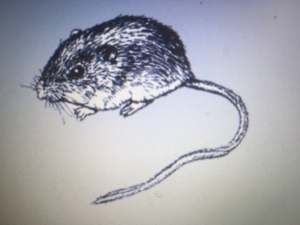 are absolutely nocturnal, and even their homes are hidden out of sight underground. During nighttime hours these tiny animals gather seeds and stuff them in furry external pockets on their cheeks. Remarkably, these animals from the family Heteromyidae do not drink a drop of water, even in the heat of summer
are absolutely nocturnal, and even their homes are hidden out of sight underground. During nighttime hours these tiny animals gather seeds and stuff them in furry external pockets on their cheeks. Remarkably, these animals from the family Heteromyidae do not drink a drop of water, even in the heat of summer
There are three types of kangaroo rat in the Sonoran Desert and they all have long tails that provide balance as they bound, up to nine feet! Large hind legs propel these leaps which carry kangaroo rats away from predators or give them a boost as they forage across their large territories. Kangaroo rats also boast keen hearing, sensing even the stealthy sweep of owl wingbeats, and the smooth slither of snakes. After eluding night’s predators and making it back home, they stash the mesquite seeds and grass seeds they have collected in their cool, moist burrows. The earthy moisture absorbed by the seeds slakes the thirst of kangaroo rats.
Pocket mice also pack their cheek pouches with seeds for delivery back to the burrow. There are four types of pocket mice in the Sonoran Desert including Bailey’s pocket mouse which is the largest of all of them weighing in at 1 3/8 ounces! Bailey’s are adapted to eat jojoba nuts which are toxic to most other mice. Pocket mice rest in the cool and humid atmosphere of their burrows, and plug the entrances to keep the moisture in. These mice concentrate their urine to a gooey consistency to preserve moisture in their systems, and will go into torpor on the hottest of days. Fiesty pocket mice defend their territories fiercely against intruders, and will fight off unwelcome visitors.
(sketch from A Natural History of the Sonoran Desert)
Is It A Beak or a Bill?
By: Claudia Kirscher
Liberty Wildlife Volunteer

There is no difference between the two terms. Beak is more commonly used for birds of prey and for striking or pecking; bill for hummingbird, pigeons, waders, and web-footed birds; either for crows, finches, sparrows, perching birds, and songbirds.
Birds have evolved their bills to a wide variety of shapes and sizes to help them survive by adapting to their food sources. It is used in finding, capturing, and manipulating animal prey or plant food, preening, courtship, defense, building nests, communicating, and feeding young. One can usually identify a bird’s food preference by the shape of the bill.
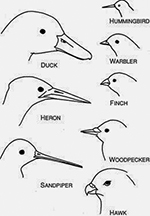
Bills are a compact layer of epidermal cells (keratin) molded around the bony core of the upper and lower mandibles (jaws). Two holes (nares) lead to the respiratory system in most species. The bill grows and birds have to constantly wear it down by rubbing on branches and rocks. Sometimes captive birds have to have their bills trimmed as they do not wear them down as they would in the wild.
In nearly all birds, unlike mammals, both upper and lower jaws can move, the top mandible has limited motion upwards. The mandibles are attached by bones, muscles, and tendons to the skull. With this ability of movement, some birds, especially shorebirds, can probe into sand or soil and just open the tips of their bills to feel for prey.
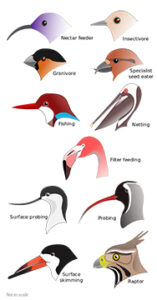
Finches: Conical bills for cracking seeds, bill size correlates with preferred seed size.
Crossbills: Feed almost exclusively on conifer cones by twisting out seeds with crossed beak.
Flycatchers: Tweezer-like beaks to grab insects in midair.

Warblers: Thin, slender, pointed beaks to pick insects off leaves, twigs, and bark.
Nighthawks: Open mouth, gaping, for chasing and scooping insects in flight.
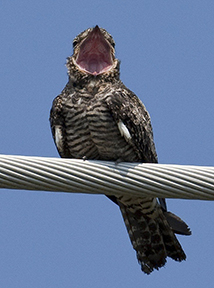
Woodpeckers: Chisel-like bills to dig and burrow into tree bark for insects which they pull out with an elongated tongue.
Stilts, avocets and shorebirds: Long bill used like forceps into the sand, but also have sensitive nerve endings on edge of bill to detect prey.
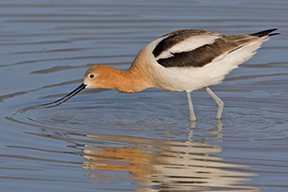
Snail kite: sharply hooked beak to reach into the snail shell.
Hawks, eagles, owls and falcons: Strong bill, hooked for tearing flesh into small enough pieces to swallow.
Brown pelican: Very long bill with large throat pouch used to scoop up fish.
Great blue heron: Spear-like bill for jabbing fish, frogs and shellfish.
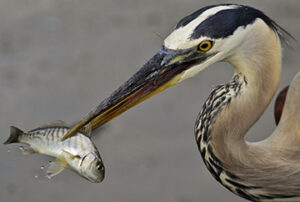
Northern cardinal: Heavy cone-shaped bill for cracking seeds.
Ducks: Strainer/filter beaks: Long flat bill that strains animals or plants from the water.
Hummingbird: Slender and long to probe nectar from flowers.
Is it a beak or a bill? Your choice!
References: allaboutbirds.org; ornithology.com; Wikipedia.org; BirdWatching magazine
(original publication January 2019)


